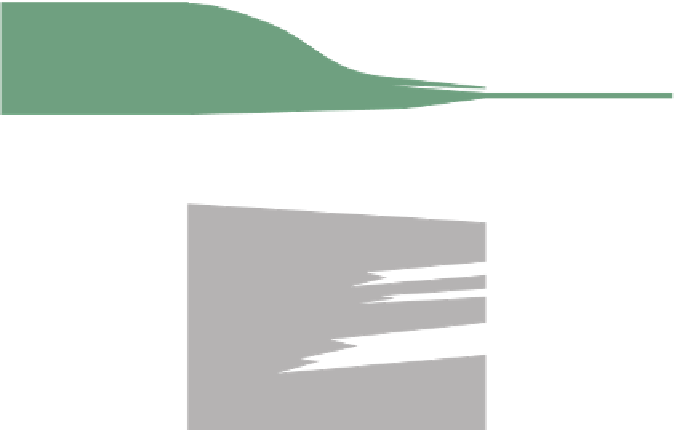Geoscience Reference
In-Depth Information
WNW
ESE
Exploration well
2/4-12
Exploration well
2/8-15
%
%
clast size (mm)
clast size (mm)
Top Tor Fm
Upper channel
unit
Upper channel
unit
GR
Ø
D
Lower channel
unit
Lower channel
unit
Base channel
reworked zone
Base channel
reworked zone
GR
Ø
D
Metres TVDSS
LEGEND
Argillaceous
bioturbated chalk
Interpreted limits
of the channel structure
GR
= Gamma ray (0−30 API)
Ø
= Neutron Porosity (-0.15−0.45 %)
D
= Density (1.95−2.95 g/cm
3
)
Homogeneous chalk
Packstone and
grainstone
Laminated chalk
Bioturbated
homogeneous chalk
Upper unit low
porosity interval
Deformed chalk
Low porosity
Pebble floatstone
High porosity
Fig. 14.
Well correlation panel parallel to the channel axis, flattened at the top of Tor Formation. The position of the well
correlation is indicated in Fig. 4. Depths are given in True Vertical Depth Sub Sea (TVDSS).
feature may be related to both turbidity and
bottom currents and that a complex interaction of
inversion tectonics, gravity-driven processes and
superimposed bottom currents controlled chalk
reworking and re-deposition.
The channel of the current study is interpreted
to have been developed by contour-parallel bottom
currents. It is broadly oriented in a contour parallel
rather than a downslope direction, making gravity
flow processes a less likely generative mechanism.

















































































































































































































































































Search WWH ::

Custom Search